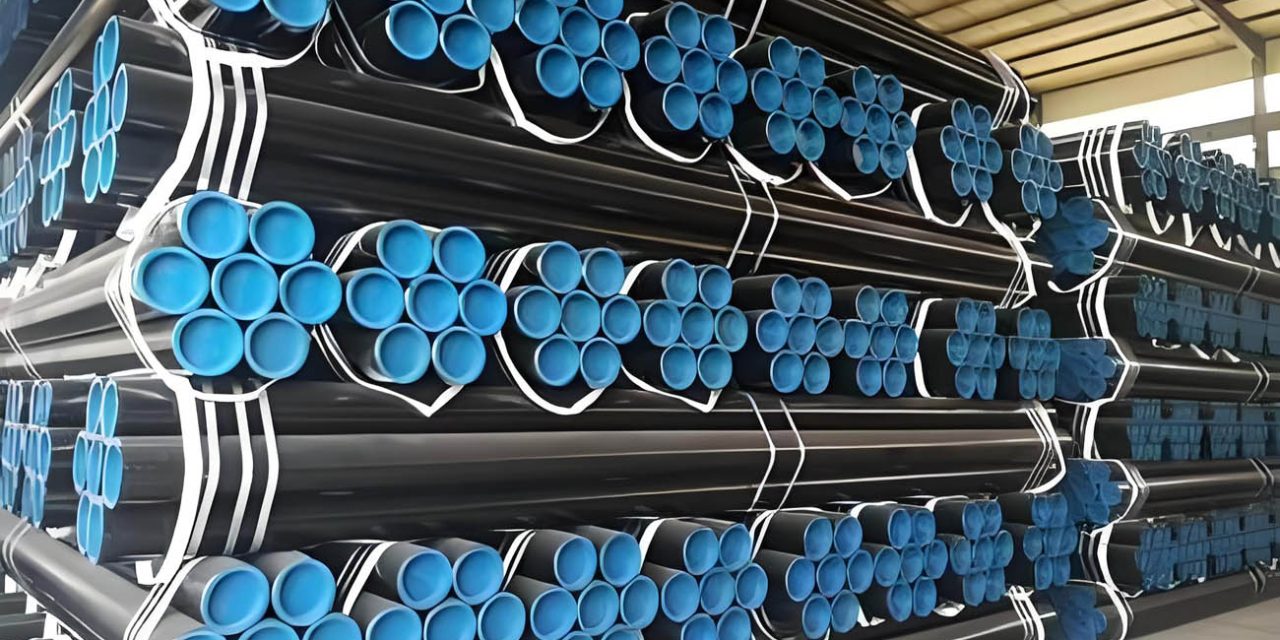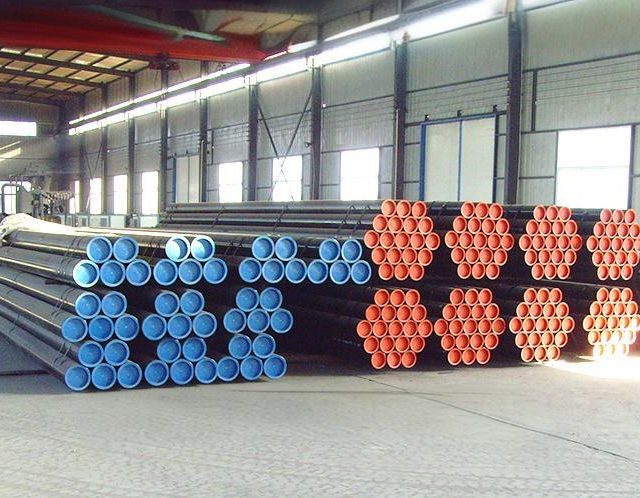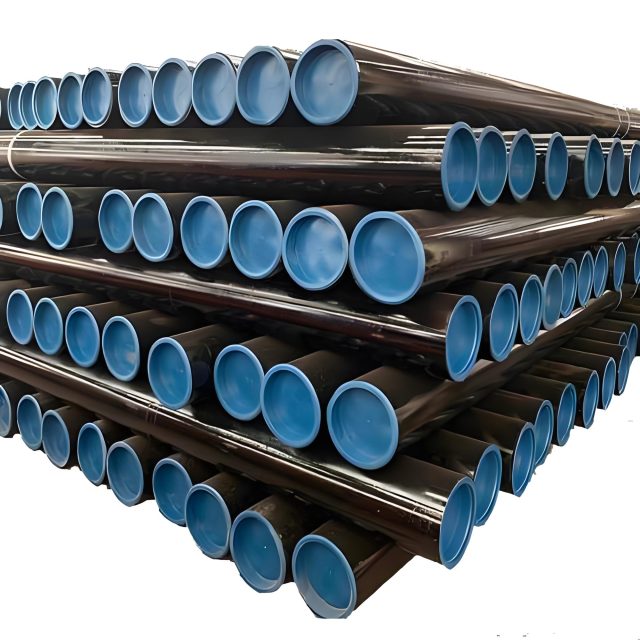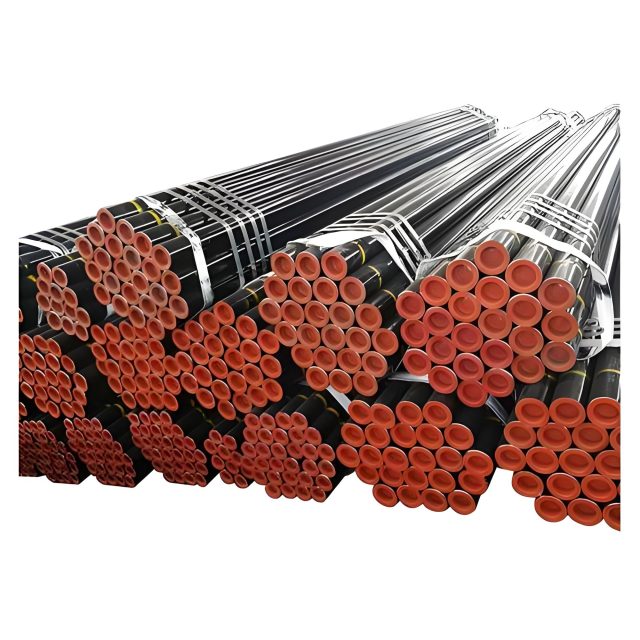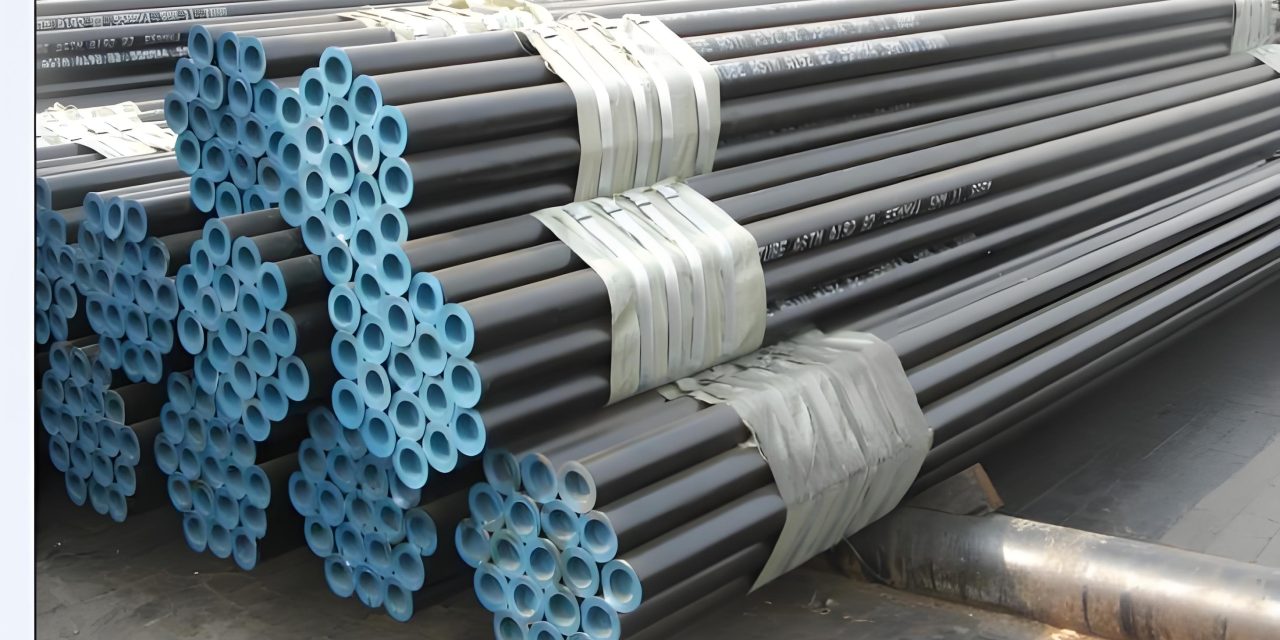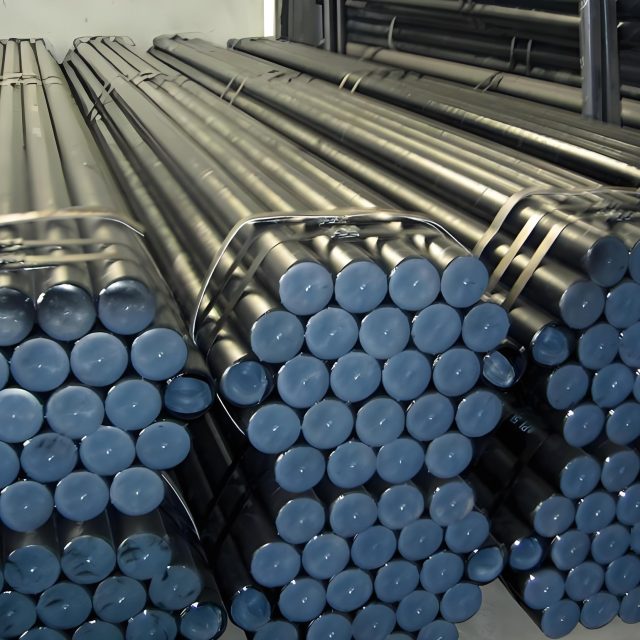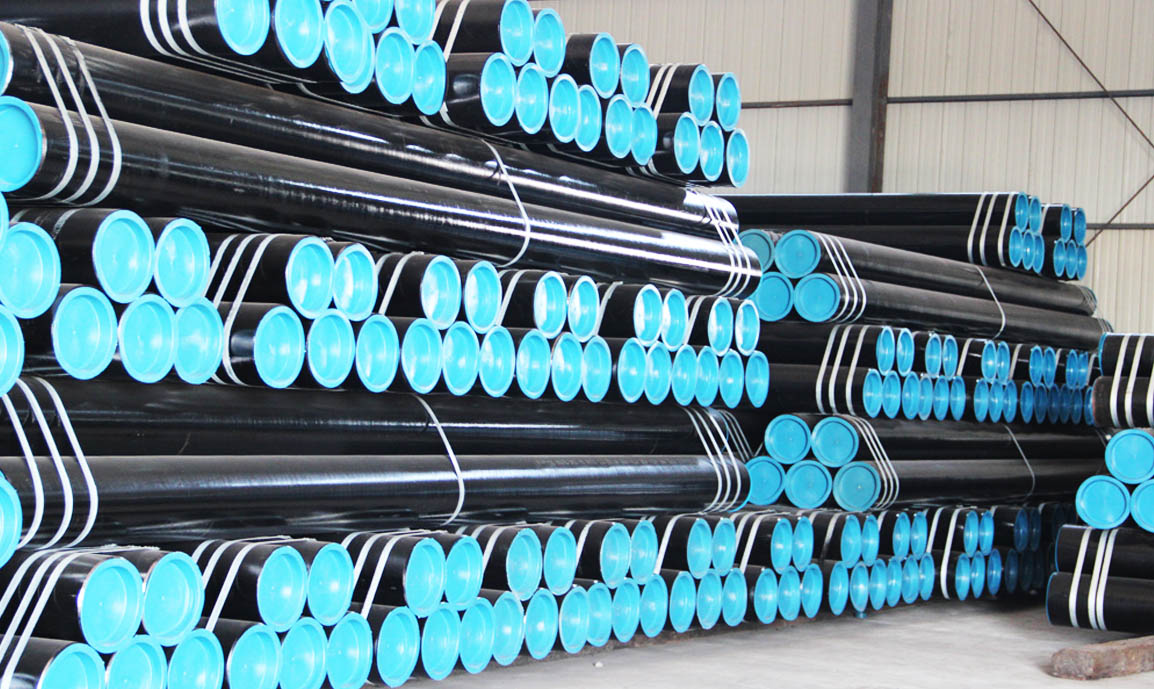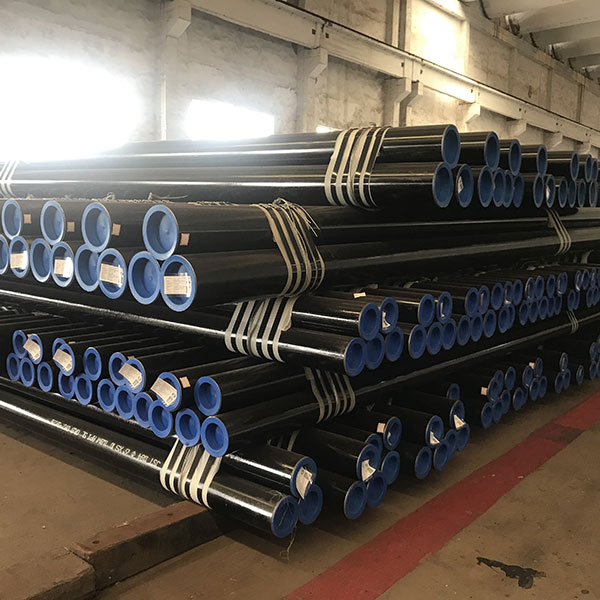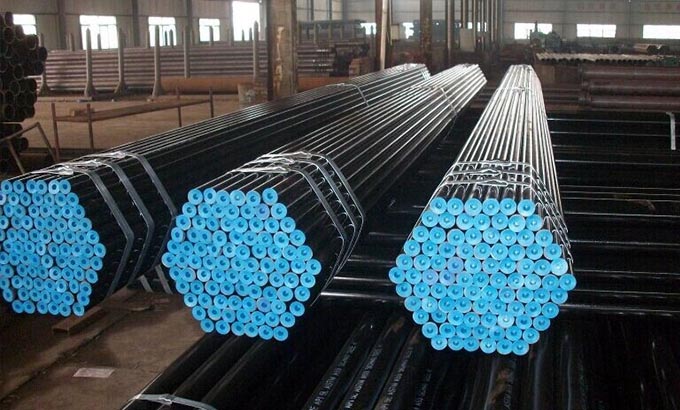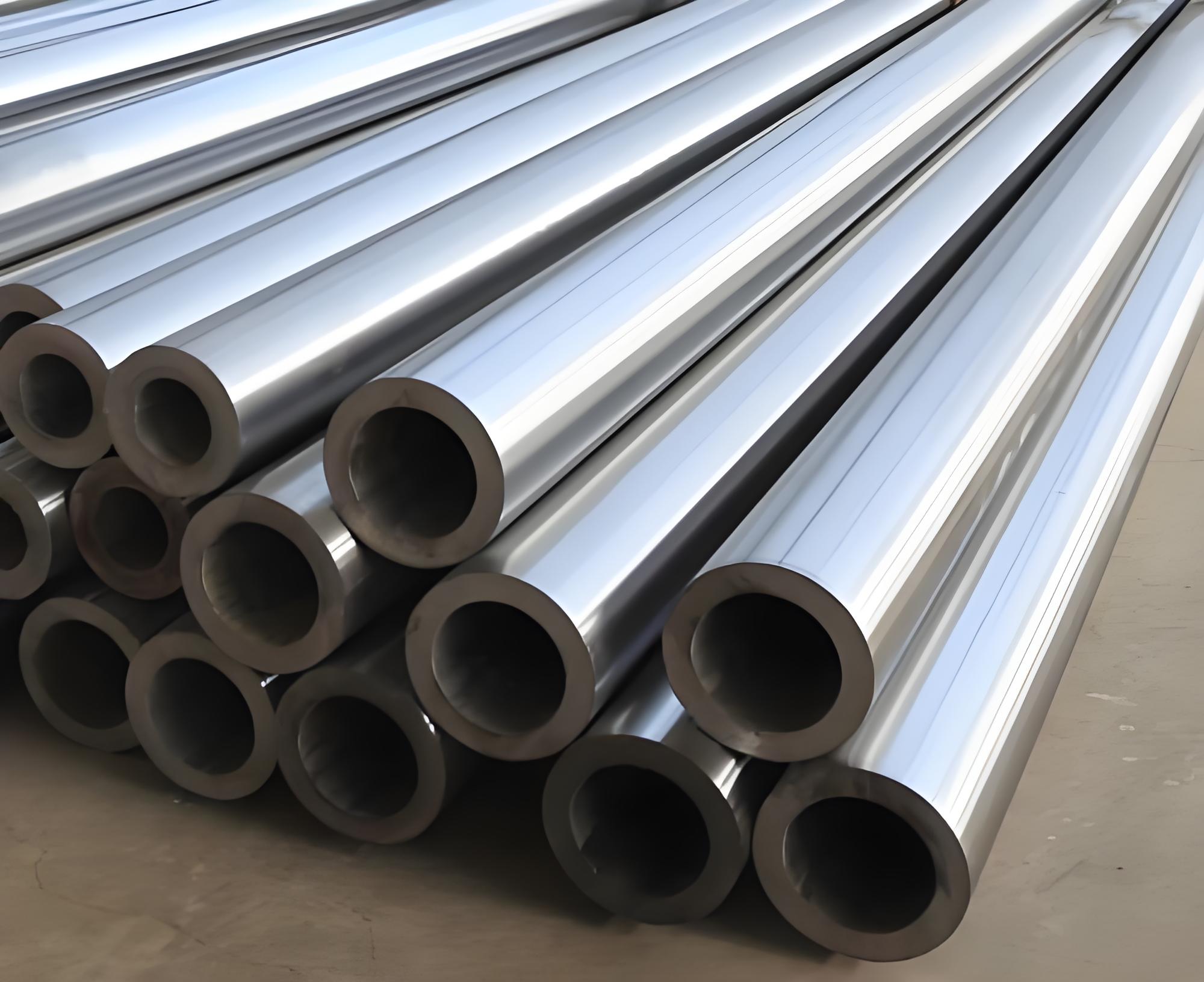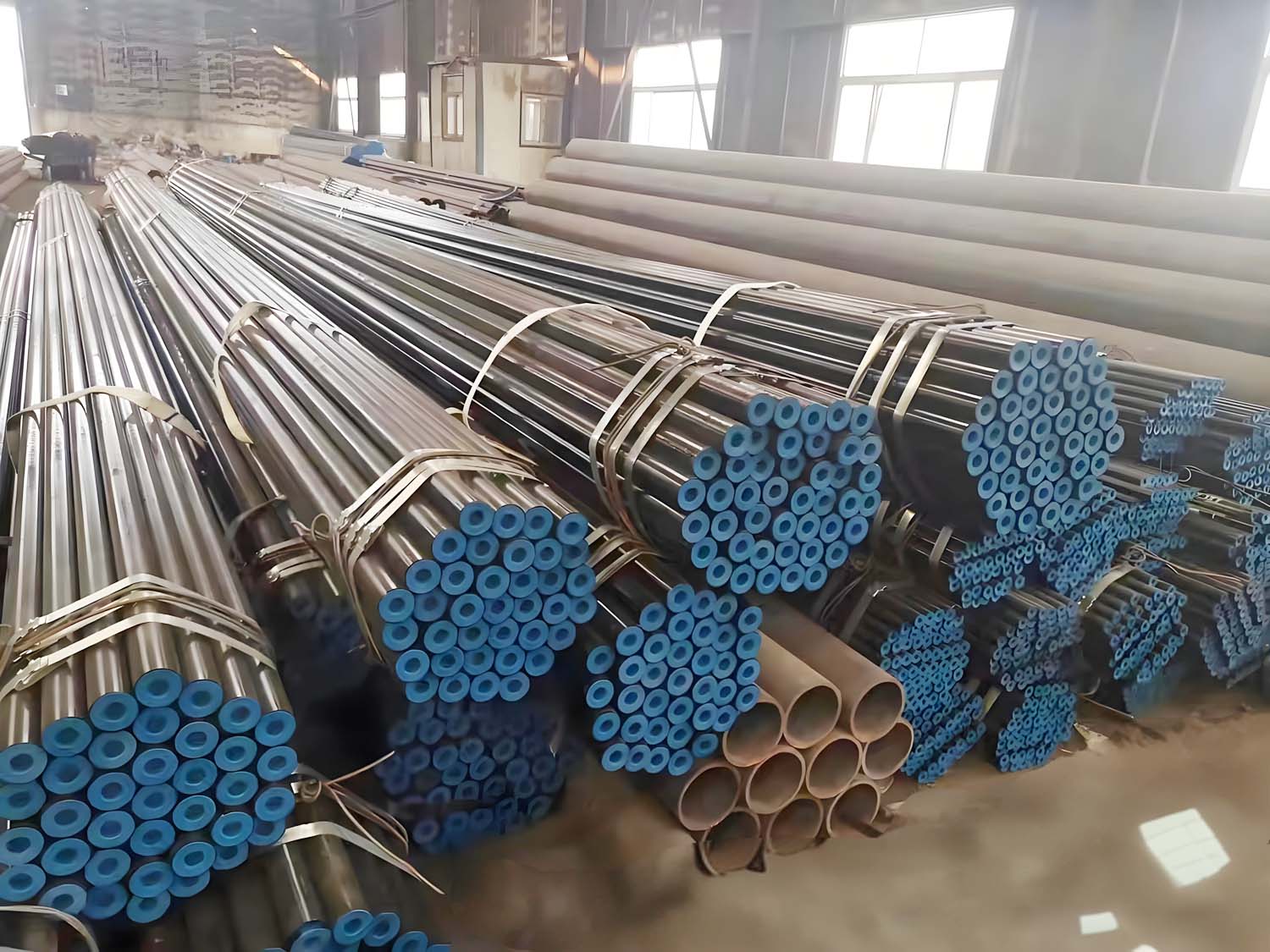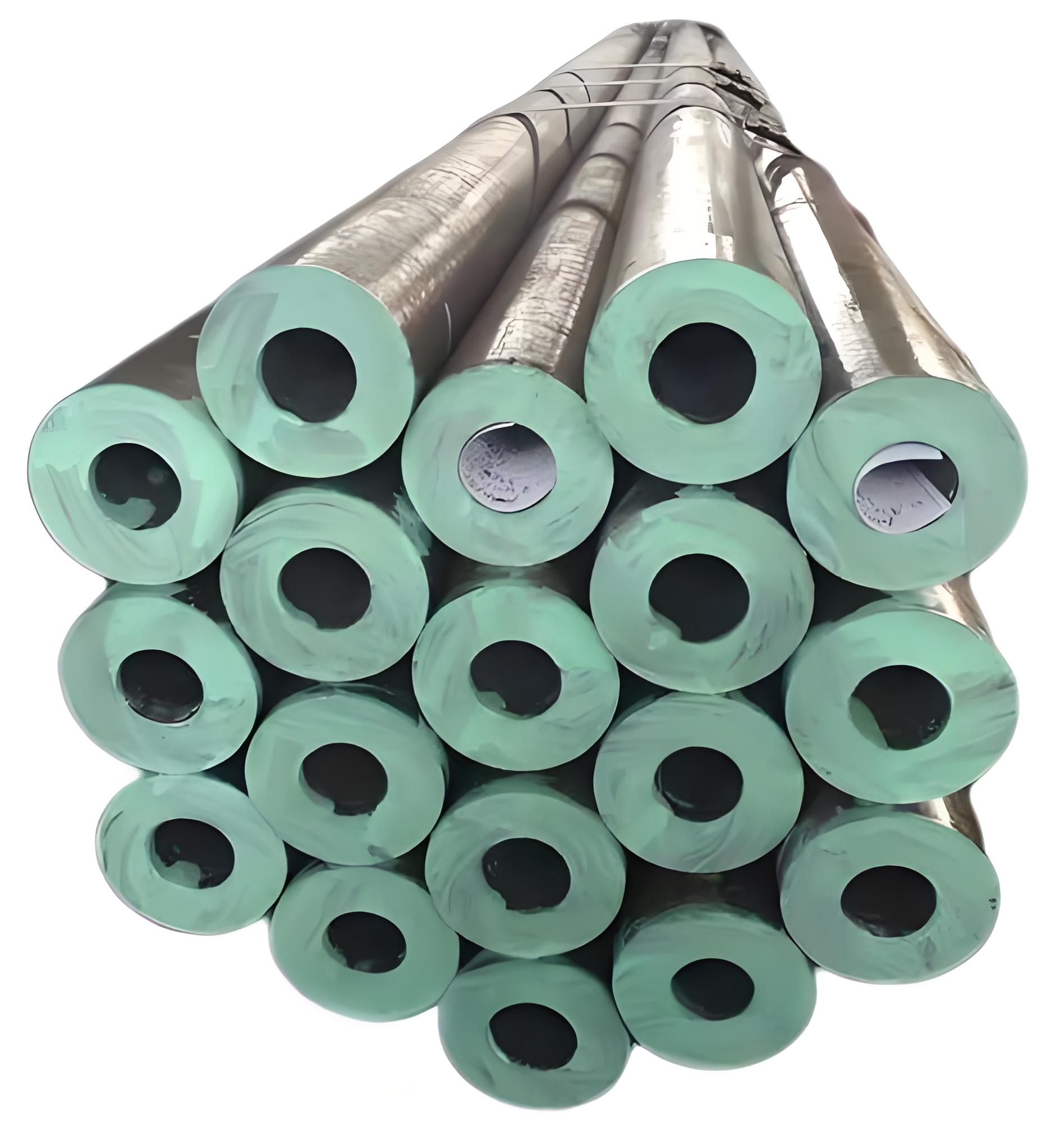ASTM A106 Seamless Steel Pipe
Introduction to ASTM A106 Seamless Steel Pipe
ASTM A106 seamless steel pipes are designed for high-temperature service and are commonly used in the construction of oil and gas refineries, power plants, petrochemical plants, boilers, and ships. This specification covers seamless carbon steel pipes suitable for bending, flanging, and similar forming operations.
ASTM A106 Steel Pipe Specifications
ASTM A106 pipes come in three grades:
- Grade A
- Grade B
- Grade C
The pipes are intended for high-temperature service and are suitable for welding, bending, flanging, and similar forming operations.
Scope
ASTM A106 covers seamless carbon steel nominal wall pipe for high-temperature service. It is suitable for forming operations involving coiling, bending, and flanging. The standard nominal pipe size (NPS) ranges from NPS 1/8 to NPS 48, inclusive, with nominal (average) wall thickness as given in ASME B36.10M.
Chemical Composition
The chemical composition requirements for ASTM A106 pipes are as follows:
Chemical Composition (%):
| Element | Grade A (max) | Grade B (max) | Grade C (max) |
|---|---|---|---|
| Carbon (C) | 0.25 | 0.30 | 0.35 |
| Manganese (Mn) | 0.27-0.93 | 0.29-1.06 | 0.29-1.06 |
| Phosphorus (P) | 0.035 | 0.035 | 0.035 |
| Sulfur (S) | 0.035 | 0.035 | 0.035 |
| Silicon (Si) | 0.10 min | 0.10 min | 0.10 min |
| Copper (Cu) | 0.40 | 0.40 | 0.40 |
| Nickel (Ni) | 0.40 | 0.40 | 0.40 |
| Chromium (Cr) | 0.40 | 0.40 | 0.40 |
| Molybdenum (Mo) | 0.15 | 0.15 | 0.15 |
| Vanadium (V) | 0.08 | 0.08 | 0.08 |
Mechanical Properties
The mechanical properties specified in ASTM A106 ensure the pipes can withstand the required high-temperature service conditions.
Mechanical Properties:
| Property | Grade A | Grade B | Grade C |
|---|---|---|---|
| Tensile Strength, min (MPa) | 330 | 415 | 485 |
| Yield Strength, min (MPa) | 205 | 240 | 275 |
| Elongation, min (%) | 35 | 30 | 30 |
Manufacturing Process
Seamless Pipe Production Process:
- Hot-Rolled Seamless Steel Pipe:
- Tube Billet → Heating → Perforation → Three-Roller/Cross-Rolling & Continuous Rolling → De-pipe → Sizing → Cooling → Straightening → Hydraulic Test → Marking → Seamless Steel Pipe with Leverage Effect Detection.
- Cold Drawn Seamless Steel Tubes:
- Tube Blank → Heating → Perforation → Heading → Annealing → Pickling → Oiling → Multiple Cold Drawing → Blank Tube → Heat Treatment → Straightening → Hydraulic Test → Marking → Storage.
Note: Seamless pipe is often made by drawing a solid shape over a mandrel to form the configuration of a tube.
Applications of ASTM A106
- Construction: Pipelines underneath, groundwater transport, hot water transport.
- Mechanical Processing: Bearing sleeves, machinery parts.
- Electrical: Gas delivery, hydroelectric power fluid pipelines.
- Industrial: High-temperature service in oil and gas refineries, petrochemical plants, boilers, and ships.
Typical Applications of ASTM A53 Grade B and ASTM A106 Grade B Pipes
Both ASTM A53 Grade B and ASTM A106 Grade B pipes are widely used in various industries, but their applications differ due to their unique properties and specifications. Here’s a detailed look at the typical applications for each:
ASTM A53 Grade B
ASTM A53 Grade B pipes are commonly used for:
- Low-Pressure Systems:
- Water pipes, plumbing, and heating systems.
- Air and steam lines.
- Gas distribution lines.
- Structural Applications:
- Construction of scaffolding, fencing, and handrails.
- Structural supports and columns.
- Mechanical Applications:
- Conveyor belts and rollers.
- Mechanical parts that require moderate strength.
- General Industrial Use:
- Pipelines for non-critical services.
- HVAC systems (heating, ventilation, and air conditioning).
Key Characteristics:
- Available in seamless and welded forms.
- Suitable for welding, coiling, bending, and flanging.
- Typically used where the mechanical properties are not the primary concern.
ASTM A106 Grade B
ASTM A106 Grade B pipes are specifically designed for:
- High-Temperature and High-Pressure Applications:
- Oil and gas refineries.
- Petrochemical plants.
- Power plants, including boilers and heat exchangers.
- Industrial Process Piping:
- Chemical processing plants.
- Fluid transport systems that require high-temperature resistance.
- High-Temperature Service:
- Steam pipelines.
- High-pressure applications such as hydraulic systems.
- Critical Piping Systems:
- Piping in ships and offshore platforms.
- Industrial piping for critical applications where safety and performance are paramount.
Key Characteristics:
- Only available in seamless form, providing higher strength and better performance under pressure.
- Suitable for welding, coiling, bending, and flanging.
- Designed to withstand higher temperatures and pressures than ASTM A53.
Summary
- ASTM A53 Grade B: Ideal for low to moderate pressure and temperature applications, including structural and general industrial uses.
- ASTM A106 Grade B: Preferred for high-temperature and high-pressure environments, particularly in the oil, gas, and power industries.
Understanding the specific requirements of your application will help in choosing the right grade and type of pipe to ensure safety, efficiency, and reliability.

